The Mosque-Cathedral of Córdoba is unique, combining a 9th century Muslim mosque with a 16th century Catholic cathedral
By Nick Nutter | Updated 25 Aug 2023 | Córdoba | Places To Go |
Login to add to YOUR Favourites or Read Later
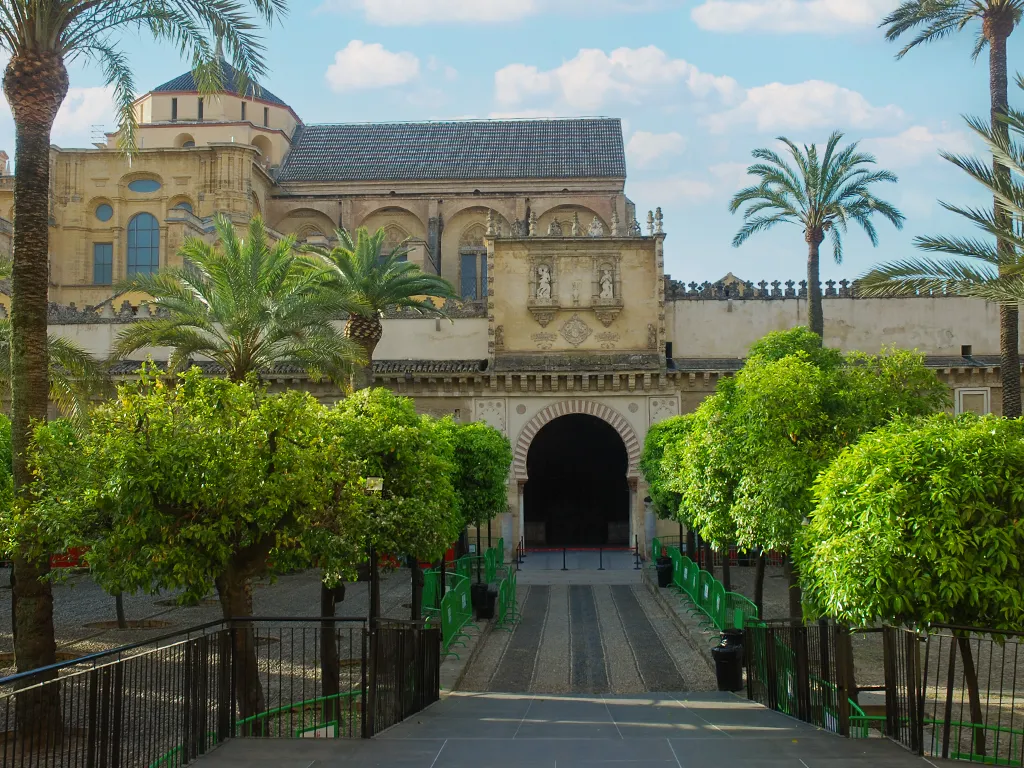
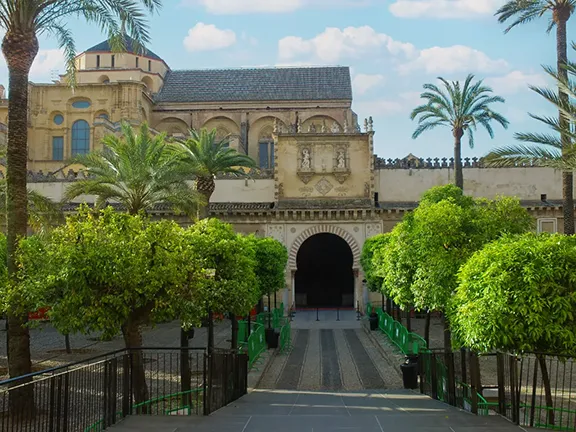
Patio de los Naranjos Córdoba Mezquita
The Mosque-Cathedral of Córdoba, or simply the Mezquita, is the most visited monument in Córdoba province, the second most popular in Andalucia behind the Alhambra in Granada, and one of the most visited monuments in Spain.
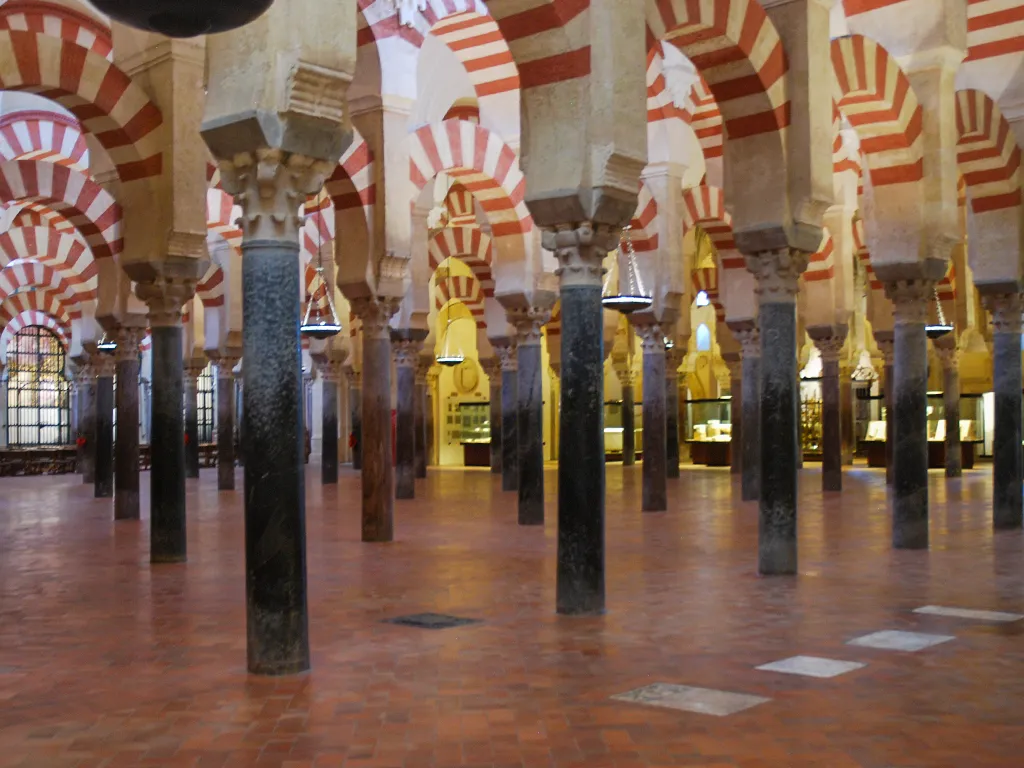
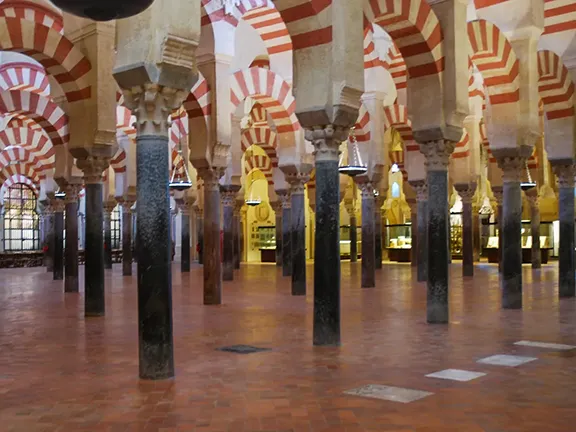
Forest of Columns Córdoba Mezquita
The Mezquita of Córdoba was started in the year 784 and the first phase was completed in a remarkable two years. It was later extended during the Emirate and Caliphate of Córdoba periods. When finished, the Great Mosque of Córdoba had 856 marble columns, a veritable forest of pillars.
The mosque-cathedral covers an area of 23,400 square metres which made it the second largest mosque in the world until the 16th century when the Blue Mosque in Istanbul was completed, the largest then and now being the Masjid al-Haram or Great Mosque at Mecca with an area of 356,000 square metres.
In order for Muslims to know the direction in which Mecca lies, and hence the direction to face when praying, mosques are constructed with a wall, known as the quibla, facing the right direction.
The Great Mosque of Córdoba is unusual in this respect in that the quibla is orientated to the south rather than the true direction of Mecca which is to the southeast.
There are two explanations for this.A traditional hadith states ‘Whatever is between the east and the west is Qiblah’. The hadiths are a collection of traditions containing sayings of the prophet Muhammad and constitute the major source of guidance for Muslims apart from the Koran.
The second explanation is based on the orientation of the most sacred pilgrimage site in the Muslim world, the Kaaba. The Kaaba is a prism shaped structure within the Great Mosque at Mecca. It is orientated north/south and east/west. Each face of the prism is supposed to represent one part of the Muslim world and the north facing side is associated with al-Andalus.
It has been suggested that the Great Mosque of Córdoba was orientated north/south so that the quibla would face the north facing side of the Kaaba.
When first built, the Mezquita was called the Great Mosque of Córdoba. In the 12th century, it was renamed the Cathedral of Santa Maria Madre de Dios and finally, from the 15th century, the Cathedral of the Assumption of Our Lady.
It was Abderramán I, one of the last of the Umayyad dynasty, who had fled Damascus and made his way to al-Andalus after his family was slaughtered by the rival Abbasid family, who ordered the construction of the mosque in 756. The mosque was to celebrate the founding of the new, independent Emirate of Córdoba that was established after Abderramán defeated the ruling Abbasid governor, Yusuf ibn Abd al-Rahman al-Fihri.
Construction started in 785 and was completed in two years. The speed at which it was built is due to the reuse of existing Roman and Visigothic columns and capitals to support the arches between them. The arches are what has become known as the typical double Arabic arch.
In reality they were a structural necessity. The columns used were too short to support the roof of the mosque. The arches are shaped so that the inner, horseshoe shaped arch acted as a truss whilst the outer, semi-circular arch supported the roof. The space between the arches allowed light to flow into the naves. The distinctive arches with yellow and red brick decorations became an emblematic feature of Muslim and Arabic architecture.
The original mosque had eight naves, each with twelve columns.
Abderramán I died in 788 and was succeeded by Emir Hisham I. Hisham had a minaret built that was later demolished. Its foundation was found during excavations in the Patio de los Naranjos during the 20th century.
The city of Córdoba grew until, by 836 AD, it was necessary to expand the existing mosque. Eight more naves were added.
The Caliphate of Córdoba was established in 929 AD by Abderramán III. To emphasise the power of al-Andalus he had a new 47 metre high minaret built, to replace that built by Hisham I.
But it was his son, Alhakén II, who became Caliph in 961 who finished the work started by his father. He extended the prayer hall by adding 12 more bays, all with the now traditional, double arches. He is also responsible for some of the ornate doors and domes within the mosque.
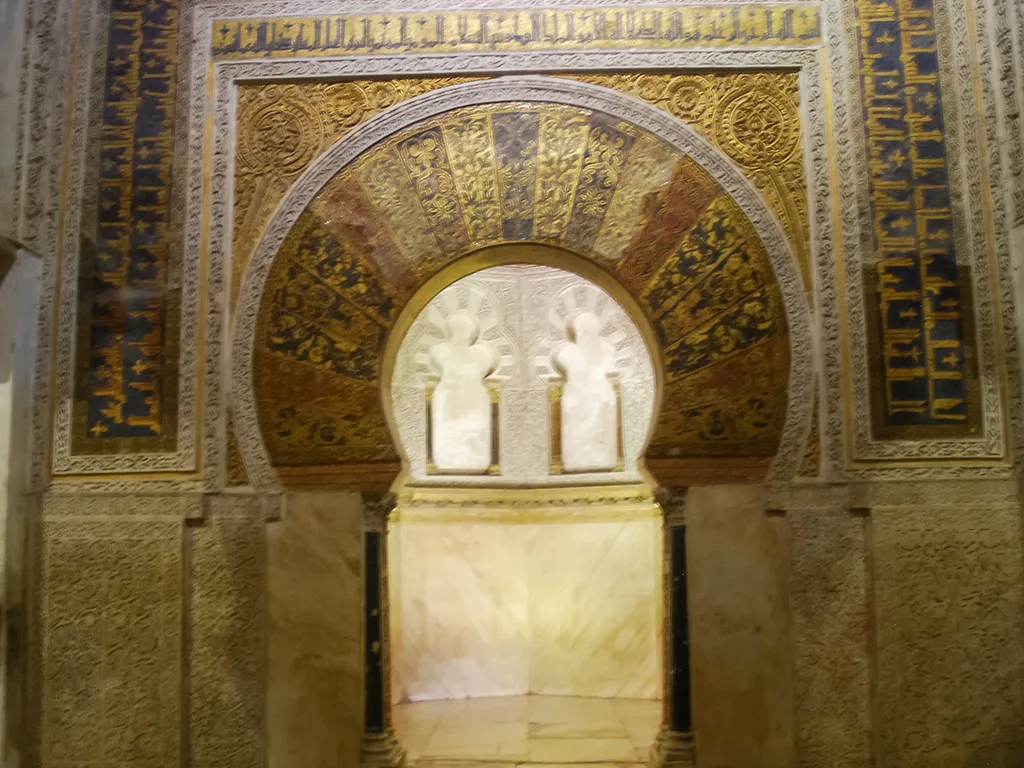
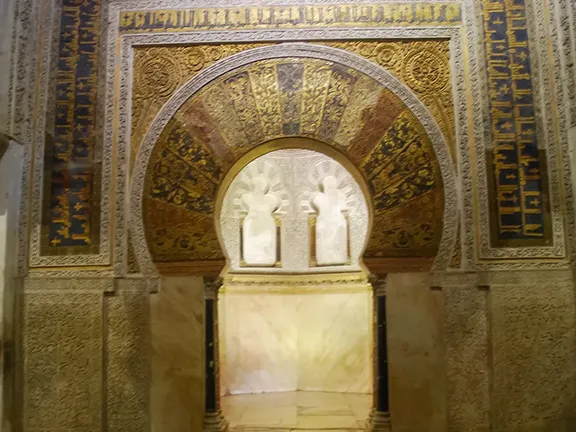
Mihrab Córdoba Mezquita
Caliph Hisha II was responsible for the final renovations and extension of the Mezquita from 987 AD.
Overall, his extensions were the most ambitious to date. 8 more naves were added to the prayer room. By this time, Roman and Visigothic columns were no longer available, so the new columns were purpose built.
The new columns are easy enough to spot since, rather than use red and yellow bricks to provide the decoration between the arches, paint was used. The new columns are also carved from limestone and painted with red ochre. Hisham II is also famous for appropriating the bells from the cathedral of Santiago de Compostela, and having them melted down to make the ceiling lamps in his mosque.
Following the fitna of al-Andalus, the Caliphate of Córdoba collapsed at the beginning of the 11th century and Córdoba city began to decline. The mosque also suffered from looting during the fitna.
In 1146 the Christian army of Alfonso VII of León and Castilla briefly occupied Córdoba for three years. The Archbishop of Toledo, Raymond of Sauvetat , accompanied the monarch and performed a mass inside the mosque to consecrate the building. According to Islamic sources, before the Christians left the city they looted the mosque, taking its ceiling lamps, the gold and silver yamur from the minaret, and rich parts of the minbar. Together with the looting during the fitna, the mosque lost all its valuable fixtures and fittings.
In 1162, after a period of continuous sieges, the Almohad caliph Abd al-Mumin ordered that Córdoba be re-established as the capital of al-Andalus. He ordered the city and its monuments to be restored. The architect Ahmad Ben Baso , who was later known for his work on the Great Mosque of Seville , was responsible for this restoration program.
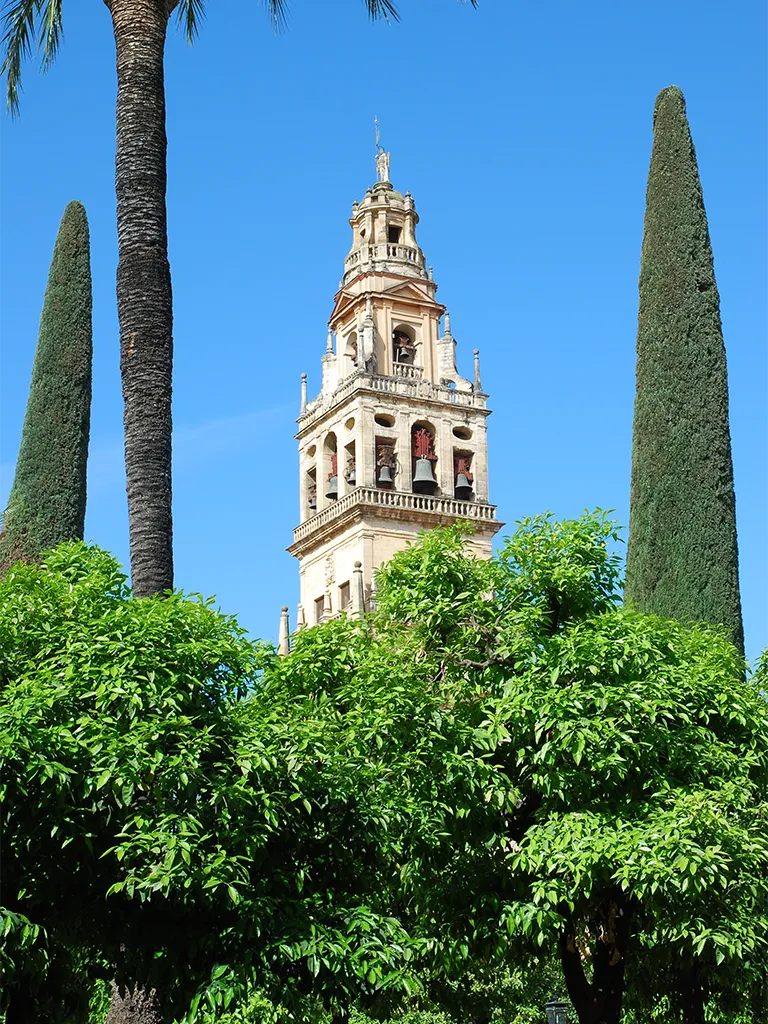
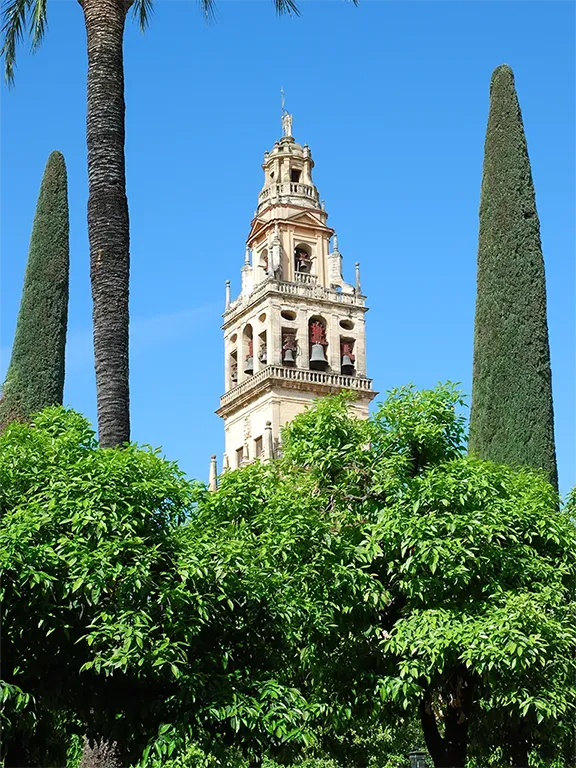
Bell Tower Mosque-Cathedral of Córdoba
Córdoba was finally taken by Ferdinand III of Castile in 1236. The Mezquita was consecrated as a cathedral dedicated to the Virgin Mary. No great architectural changes were made. A few small chapels around the periphery appeared together with some tombs. The first major work, the Royal Chapel, was not completed until 1371.
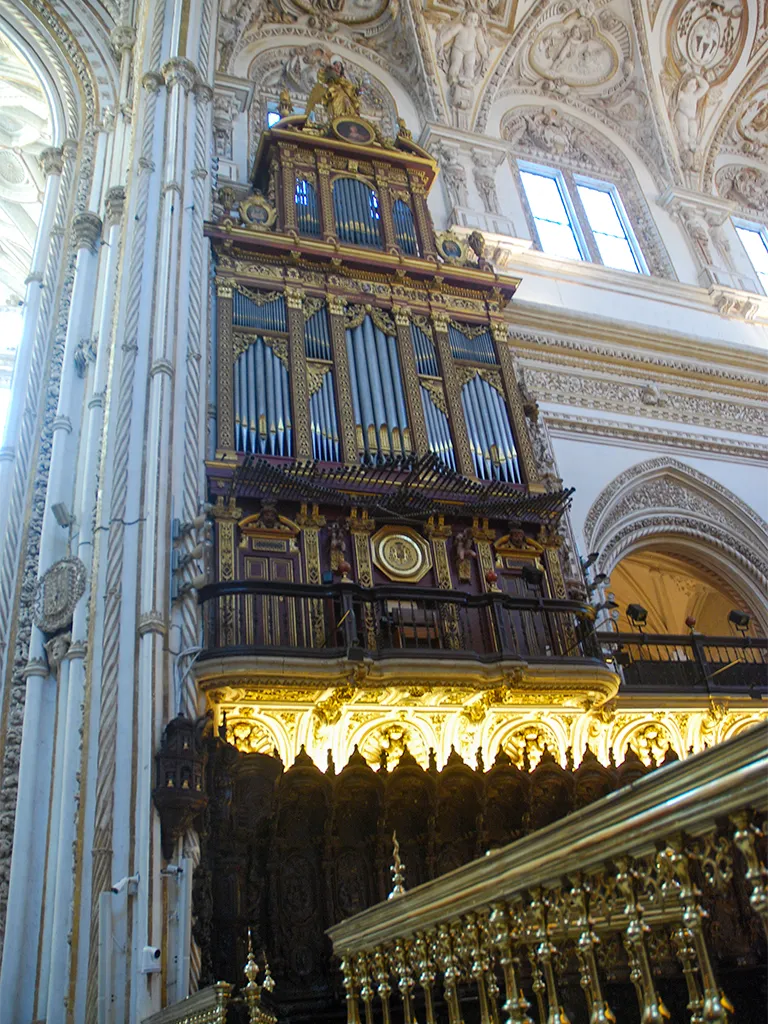
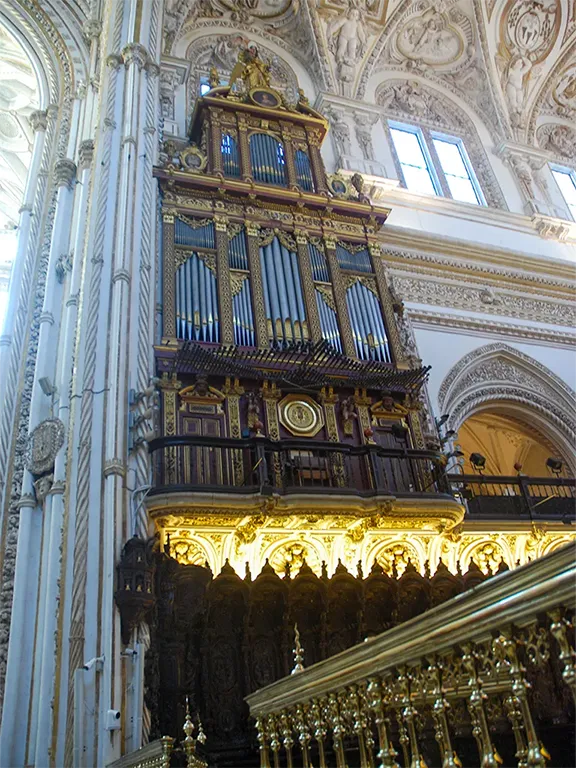
Organ above Choir
The idea to place a new cathedral within the Mezquita is credited to the Bishop of Badajoz and Salamanca, Alonso Manrique.
He was familiar with the layout of the Castilian cathedrals. His idea was, at first, controversial and it was not until Charles I of Spain (also Emperor Charles V of the Holy Roman Empire) intervened that the bishop was given permission to go ahead. Charles later regretted his decision saying, ‘you have destroyed what was unique in the world, and you have put in its place what can be seen everywhere’.
Work to build a large Christian nave, the new Main Chapel, in the centre of the mosque began in 1523. There are a number of styles, some Gothic, some Renaissance, with Mannerism showing towards the end of the project. The new Main Chapel was completed in 1607. The choir, behind the chapel, was not built until 1757.
The doors open at 8.30am from Monday to Saturday. For the first hour entrance is free, except on days of ‘extraordinary celebration’, holy days.
There is something magical about being in the Patio de los Naranjos, the main courtyard, as the sun appears over the outer walls and illuminates the bell tower and there is certainly something to be said for being able to wander through the forest of columns in relative isolation.
However, the various ornate chapels around the periphery, the features within the Main Chapel and choir and the remaining traces of the Muslim mosque are not well explained so getting an audioguide with your entry ticket is a good idea. An even better option is to go on a guided tour.
You can check the availability for your visit date below.
The Catholic additions to the mosque stand out, ornate, over the top and clearly very expensive compared to the more simplistic, though no less beautiful Islamic adornments.
The Mosque-Cathedral was declared a World Heritage Site by Unesco in 1984, and in 1994 this denomination was extended to the entire historic centre of Córdoba.
The Mosque-Cathedral at Córdoba is unique and has to be a ‘must see’ in Córdoba. However, on balance, I think Charles I was right.
Visiting Cordoba? Check out our other articles about the city:
Travelling to/around Spain and need some help? Here are our favourite travel resources.
We usually use Booking.com to look for hotels or apartment rentals. Lots of choice & you can unlock more discounts with their Genius loyalty programme!
To research transportation options around Spain, we like using Omio. It’s an easy way to compare different modes of transport and prices in one place.
For last-minute holiday deals, check out Expedia UK.
Looking for things to do? Viator has a huge catalog of activities and tours across many cities in Spain. We also love Get Your Guide!
Guruwalk is our favourite platform to find the best free walking tours in a city.
For money transfers or spending overseas in foreign currency, Wise is our favorite borderless banking service.
Travel insurance is a must to protect against emergencies and unexpected incidents. Get a quote from SafetyWing here.